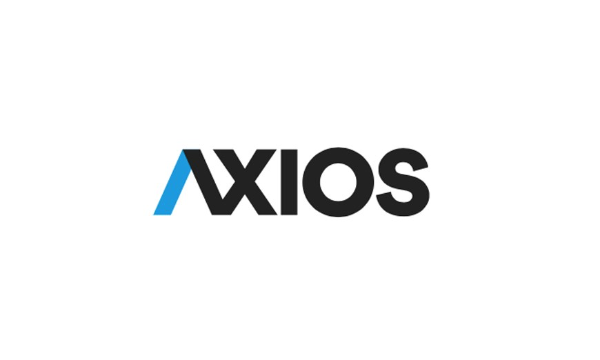
In today’s world of money-saving hacks and financial influencers, the phrase “smart spending” has become something of a badge of honor. People pride themselves on scoring deals, optimizing every purchase, and squeezing the most out of every dollar. From cashback apps to bulk buying to minimalism, smart spending seems like the ultimate path to financial freedom.
But beneath the surface of all this cleverness, there are some overlooked drawbacks that can quietly eat away at savings and peace of mind. True financial health is more than coupon clipping and bargain hunting—it’s about seeing the full picture.
1. Time is Often the First Thing to Go
Chasing discounts and comparing prices online may sound wise, but it can quickly become a massive time sink. Hours spent analyzing reviews, calculating cost-per-use, and hunting for promo codes can quietly add up.
Time that could be invested in work, relationships, or rest ends up sacrificed for marginal savings. For many people, the time-money trade-off ends up leaning too heavily in one direction. When the pursuit of value becomes obsessive, it stops being smart.
2. Loyalty Programs Create a False Sense of Savings
Retailers love rewarding repeat customers, and many smart spenders eagerly sign up for loyalty points, punch cards, and email-only deals. But these programs often manipulate consumer behavior, encouraging purchases that wouldn’t have happened otherwise. Spending to “save” is still spending, and the illusion of getting a deal can push budgets past the breaking point. The psychological pull of earning points or reaching the next tier can be stronger than the logic of sticking to a plan. The result is often more spending in the name of strategy.
3. Cheap Now Can Mean Expensive Later
Buying something at a steep discount might feel like a win, but poor-quality items often lead to repairs, replacements, or regret. “Buy it for life” may cost more upfront, but it avoids a cycle of re-purchasing disposable products. What looks like smart frugality can turn into a treadmill of throwaway goods. The real cost shows up over time, quietly draining bank accounts with little warning. Long-term thinking is essential when evaluating the true price of a bargain.
4. Subscription Overload is Real
Smart spenders often sign up for monthly services that seem efficient or cost-effective, like streaming bundles, fitness apps, or meal plans. But many forget to reassess these subscriptions regularly, letting unused services quietly auto-renew. Over time, the accumulation of these small charges undermines any perceived savings. Companies thrive on people signing up with good intentions and then forgetting to cancel. What starts as a sensible investment can turn into a recurring leak in the budget.

5. Bulk Buying Can Lead to Waste
Warehouse clubs and bulk discounts make it easy to feel like a strategic shopper, especially when the price per unit drops. But buying in large quantities often leads to spoilage, clutter, or forgotten items collecting dust in the back of a pantry. The assumed value disappears when products expire or get thrown away unused. Smart spending means knowing the difference between savings and surplus. Overspending on bulk items can crowd not just shelves, but also budgets.
6. “Sales” Create False Urgency
Limited-time deals and countdown clocks are designed to ignite urgency, making smart spenders feel like they’re seizing a rare opportunity. But many of these so-called sales are constant or even artificially inflated to look impressive. When shoppers feel compelled to buy just because of a deadline, they’re reacting emotionally, not rationally. This behavior often leads to impulsive decisions dressed up as smart strategy. In reality, timing a purchase around personal need is usually wiser than reacting to marketing pressure.
7. The Emotional Cost of Constant Calculation
Always analyzing purchases and comparing every option can create stress, anxiety, and even decision fatigue. Smart spending can start to feel like a never-ending math problem where every choice needs to be optimized. Over time, this pressure may overshadow the enjoyment of simple pleasures or necessary expenses. Financial mindfulness is important, but obsession can turn even basic spending into an emotionally draining process. Balance matters as much as budgeting.
8. Cashback and Reward Traps
Cashback credit cards and reward platforms promise a slice of money back with every transaction, making spending feel a little less painful. However, the promise of rewards can actually increase spending, especially when people justify larger purchases to chase higher returns. These programs are carefully designed to encourage more swipes, not fewer. What seems like a rebate can turn into an enabler of debt or overconsumption. The hidden cost is often a subtle increase in overall financial exposure.
9. DIY Culture Can Backfire
In an effort to avoid service fees or “wasteful” spending, many people take on do-it-yourself tasks that require more skill, time, or tools than anticipated. Fixing appliances, repairing clothes, or remodeling homes can become expensive misadventures when things go wrong. What looks like a clever financial decision upfront can end up costing more than hiring a professional. There’s nothing smart about saving money only to spend twice as much correcting a mistake. Sometimes, paying for expertise is the real value play.
10. The Social Pressure of “Frugal Flexing”
With the rise of money-saving influencers and budget gurus, there’s now a kind of social currency tied to frugality. People proudly post about their thrift store finds or budget vacations, turning savings into a performance. This creates pressure to be seen as a “smart spender” even when it’s not authentic or sustainable. The hidden cost is the emotional toll of keeping up appearances and trying to prove financial responsibility to others. Authentic financial health doesn’t need an audience.
The Good & Bad Of “Smart Spending”
In the age of financial literacy, smart spending has become more than a strategy—it’s a lifestyle. But even the wisest approaches can carry invisible costs that undermine their purpose. Recognizing the trade-offs behind these habits is essential to making truly empowered financial decisions. It’s not just about where money goes, but what it takes to save it in the first place.
Have any of these hidden costs surprised you? Make sure that you share your stories below.
Read More
11 Smart Spending Tricks That Make Broke People Look Rich
10 Things People Regret Spending Too Much Time on Social Media For
The post 10 Hidden Costs of “Smart Spending” appeared first on Everybody Loves Your Money.







